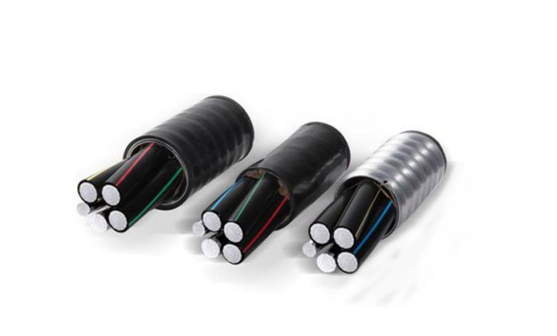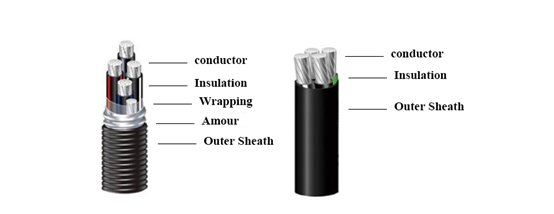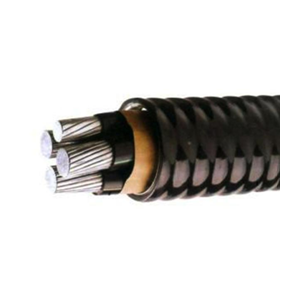0 Preface
Urban rail transit stations are places with high personnel density, and the mobility of personnel is also very large. Especially at underground stations, lighting fixtures are the only source of normal lighting. Therefore, stable and reliable lighting is a necessary condition for ensuring the safety and comfort of passengers in the station, and it is also a prerequisite for ensuring that the train can operate normally, orderly and safely.
Green lighting refers to the use of scientific lighting design, lighting products with high luminous efficiency, long life, safety and stable performance to improve and improve people's work, study and life, thus creating an efficient, comfortable, safe, economical and beneficial The environment fully reflects the lighting of modern civilization.
At present, urban rail transit in Beijing generally uses traditional lighting, and traditional lighting has many shortcomings in practical applications. In order to actively respond to the concept of low-carbon and environmental protection and combine the characteristics of Beijing urban rail transit, Beijing Rail Transit has carried out the transformation test of the existing type of lamps with LED lighting fixtures. The application of LED can meet the requirements of green environmental protection and solve the problems existing in current lighting fixtures.
1 Status of urban rail transit lighting in Beijing
The types of lighting fixtures currently used in Beijing Urban Rail Transit Stations include fluorescent lamps, metal halide lamps and high-pressure sodium lamps. The variety of lamps and power is large, which is not convenient for procurement and maintenance, and is not energy-saving and environmentally friendly. Moreover, the lifespan of these types of lighting fixtures is basically less than 10 000 h, and some even less than 5 000 h. At present, the working voltage of the lamps used in the lamps and lanterns is basically derived from 220 V of the mains electricity exchange. Due to the special internal lighting distribution of urban rail transit, the distribution voltage is generally high, which causes the lamps to be easily damaged and the use period is greatly shortened. The following are the problems that currently exist with lighting fixtures.
(1) Fluorescent lamps. The color rendering is low, and the power consumption is relatively high due to the low power factor.
(2) Metal halide lamps. It has high luminous efficiency, good color rendering performance and long life, but it has a long ignition time and is not easy to be used in emergency lighting sources.
(3) High pressure sodium lamp. The luminous efficiency is high, the power consumption is small, the life is long, the fogging ability is strong, and the insects are not trapped, but the illumination of the sodium lamp has defects in persistence.
Due to the special structure of the urban rail transit station structure, the structure of the underground station and the section is fully enclosed, the demand for the station lighting fixtures is large and the lighting time is long; the structure of the ground station and the section is basically semi-open, so the station Lighting fixtures are greatly affected by environmental factors. There are many dusts in the station and some lighting fixtures are exposed for a long time, which seriously affects the luminous efficiency and life cycle of the light source. In general, these ordinary light sources have major problems in terms of energy saving, environmental protection and maintenance costs.
2 LED lighting features
LED is a light-emitting diode, which is an electronic device that can convert electrical energy into light energy. Its core part is PN junction. In addition to its forward conduction, reverse cut-off and breakdown characteristics, it also has certain conditions. Luminous properties, but light is only produced near the PN junction.
2.1 Advantages of LED lighting
LED lighting has an absolute advantage over traditional lighting, mainly in eight aspects.
(1) Voltage: The LED uses a low voltage power supply. A single voltage is between 1.9 and 4 V, which is safer than using a high voltage power supply.
(2) Vibration resistance: LED is a solid state light source. Due to its particularity, it has unmatched vibration resistance of other light source products.
(3) Life expectancy: up to 50,000 h and above.
(4) Stability: It is relatively less affected by ambient temperature.
(5) Response time: The response time of LED lighting is nanosecond, which is the fastest response time of all light sources.
(6) Energy saving and environmental protection: LEDs are 60% to 80% more energy efficient than traditional lamps, and contain no harmful substances such as metal mercury.
(7) Color: The bandwidth of the LED is narrow and the color of the light is pure. Therefore, the color of the LED is much richer than that of other light sources, and it can be more accurate.
The authenticity of the ground reaction object.
(8) Effectiveness: LED luminous power conversion is close to 98% or more, so the luminous efficiency is high. After experimentation, the highest light efficiency has reached 161 lm / W, is the purpose
The most luminous products in front of the light.
The power supply of the LED lighting fixture is a low-voltage DC power supply. Therefore, the LED lighting fixture is equipped with an AC/DC conversion and constant current driving power supply, so that the damage of the lamp due to the high voltage can be effectively prevented, thereby improving the use of the lamp. life. LED lighting response time is very short, can meet the requirements of emergency lighting and high light efficiency, so that under the same illumination standard, the power consumption is the smallest, which can achieve the effect of energy saving and emission reduction. Since the LED is completely encapsulated in epoxy resin and made of non-toxic materials, it is very environmentally friendly and durable.
2.2 Inadequacies of LED lighting
In recent years, the luminous efficiency of LEDs is gradually increasing, which is close to the level of fluorescent lamps and continues to grow. However, there are still some technical problems in lighting applications and popularization.
(1) LED adopts cold light technology, and the light emitted by it has a certain gap with natural light. Incandescent lamps have a very strong yellow light component, giving a warm feeling. The white light emitted by the LED has a blue light component, which makes people's vision less natural.
(2) There is a problem with the heat dissipation of LED lamps. As the power increases, the heat dissipation problem becomes more and more prominent, and a large number of practical applications show that
The basic reason why the LED cannot increase the input power is that the LED will release a large amount of heat during the working process, so that the junction temperature of the die rises rapidly and the thermal resistance becomes large. The higher the input power, the greater the heating effect. The increase of temperature will lead to device performance degradation, non-radiative compound increase, device leakage current increase, semiconductor material defects increase, encapsulation epoxy resin yellowing, etc., seriously affecting the photoelectric parameters of LED, seriously affecting the life of LED.
(3) LED prices are higher. This is the main reason for the popularity of L ED lighting. However, in recent years, due to continuous improvement of wafer technology, manufacturing costs have been declining, and development is progressing toward high efficiency and low cost, which provides favorable conditions for the application of LEDs in the field of illumination.
3 LED application and influence in rail transit
The development of the urban rail transit industry requires “strict cost control and low consumption of environmental protectionâ€. In order to build a modern rail transit, energy conservation and consumption reduction are taken as an important means to improve the overall network operation management capability and the fine management of equipment facilities operation and maintenance, thereby promoting the comprehensive, coordinated and sustainable development of the capital transportation.
In accordance with the planning requirements of the urban rail transit industry, we will strengthen energy management, mainly improving energy utilization efficiency, reducing energy consumption levels, and stopping energy waste from two aspects: technology energy conservation and management energy conservation.
At present, the experimental application of LED lighting in some stations of Beijing urban rail transit is mainly reflected in the technical energy saving. The relevant technical data is collected through the test application of the station to verify the practicability and economy of LED lighting for LED lighting in rail transit. The wide application within it provides a strong practical basis.
After field tests, the relevant technical data collected are mainly reflected in the illumination value of the fixed point, lighting equipment power, running time, power factor and energy consumption. Table 1 and Table 2 show the currently collected fluorescent lamps and LED lighting. The basic parameters and the comparison of energy consumption and illuminance.

Table 1 Comparison of energy consumption and parameters of fluorescent lamps and LED lighting

Table 2 Comparison of illumination between fluorescent lamps and LED lighting
Through the comprehensive comparison of these data, LED lighting has certain advantages over fluorescent lighting in terms of energy consumption and illumination.
3.1 Energy consumption data analysis
At the same operating voltage and time, the power of the selected LED illumination is reduced by half compared to the power of the fluorescent lamp, and the power of the LED illumination
The rate factor is also about 0.2 higher than the fluorescent lamp. As the power is reduced, the operating current is also reduced accordingly, and the heat generation of cables and components is also reduced, which not only reduces energy consumption, but also extends the life of the device.
Calculation formula based on energy consumption
Power A = total power P × time T
And total power P = total power of the light source P 1 + total power of the accessory P 2,
Calculate the fluorescent lighting and LED lighting separately.
(1) When using fluorescent lighting, the measured electric energy value is 2 102 k Wh, and the measuring time is 600 h. According to the formula A = PT, the total power P is about 3 500 W.
The power of the single light source is 40 W, and the number of light sources is 80. The total power of the light source = the power of the single source light × the quantity, the total power of the light source P 1 is 3 200 W.
According to the calculation of P = P 1 + P 2 , the total power P 2 of other accessories is about 300 W.
(2) When using LED lighting, the measured electric energy value is 966 kW.h, the measuring time is 600 h, and the formula A = PT can be obtained: the total power P is about 1 610 W.
The power of the single source light source is 20W, and the number of light sources is 80. The total power of the formula light source = the power of the single source light source × quantity, can be obtained: light
The total source power P 1 is 1600 W.
According to the calculation of P = P 1 + P 2 , the total power P 2 of other accessories is about 10 W.
It can be seen that LED lighting can not only use low-power light source, but also reduce the power of its accessories, so whether it is light or not
The energy consumption of the source or the accessories is greatly reduced.
3.2 Illumination data analysis
We selected 6 test distribution points and tested the illumination. Through the comparison of the contrast test values, the illumination of the test point directly under the LED lamp is significantly higher, and the illumination value of the test point between the lamps is not much improved. The main reason is due to the blockage of the heat dissipation of the LED lamp. Since the lamps at the test station are densely distributed, the overall illuminance value is higher than the illuminance value of the fluorescent lamp. It can be seen that if the interval distribution of the lamps is large, the illuminance value is bound to decrease, and if it is serious, a significant shadow area will appear. Therefore, before using LED lighting, it is necessary to master the illumination area of ​​the LED lamp according to the installation height and illumination angle of the lamp, and to reasonably determine the distribution of the lamp, so as to avoid such a situation.
4 Conclusion
Under the influence of the energy crisis and the greenhouse effect, the traditional thermal power generation has gradually reduced its advantages. The emerging LED industry is gradually infiltrating into various industries due to its energy saving and environmental protection characteristics. At present, the popularity of LED is mainly limited by funds, mainly reflected in the large investment in the early stage and the high maintenance cost. However, in the long run, due to the longer maintenance period, the overall expenditure is relatively small. Therefore, it is necessary to meet the illuminance standards stipulated by the urban rail transit industry and to meet the energy conservation and environmental protection. LED lighting has become an inevitable way to replace conventional lighting.
Rare Earth Aluminum Alloy Power Cable is kind of cable, in which the rare earth high iron aluminum alloy is used as conductor, flame-retardant organosilane cross-linked polyethylene is used as insulation and the self-locking armored structure is installed, has completely independent intellectual property rights and removed the defects of aluminum cable systematically. The environment-oriented insulation materials with low smoke, free halogen and being fire-retardant have greatly reduced risk of being on fire. This cable can installed in moist environment. The cables boasts large current carrying capacity and convenient and low cost installation and maintenance.
Standard: GA306 Jacket: PVC
Conductor: aluminum alloy Cores: single core or multicore
Insulation: XLPE/PVC Rated voltage: 0.6/1KV

Advantages:
- Conductor fatigue resistance
- Creep resistance
- Impact resistance
- Easy to bend
- Corrosion resistance
- Light weight
- Easy installation
- Long life span
- Flame retardant
- Fire resistant
- Zero halogen & low smoke
- Excellent flexibility
- Corrosion & abrasion resistant
- Decent mechanical strength
- Chemical & acid resistance
- Excellent elasticity and stickiness
- Superior economic performance
- ...

Application:
- Lighting
- Public amenities such as theatres, cinemas
- High rising buildings
- Public buildings such as libraries, museum, schools and hospitals
- Family residence
- Household appliances
- Electrical equipment
- Power console
- Automotive industry
- Government buildings
- Power transmission and distribution lines
- And many more...

Welcome to visit our factory to learn more about us. If you have any questions, please feel free to contact us.
Rare Earth Aluminum Alloy Cable
Rare Earth Aluminum Alloy Cable,Aluminum Alloy Electric Cable,Rare Earth Aluminum Alloy Power Cable,Aluminum Alloy Armoured Cable
Fujian Lien Technology Co.,Ltd , http://www.liencable.com